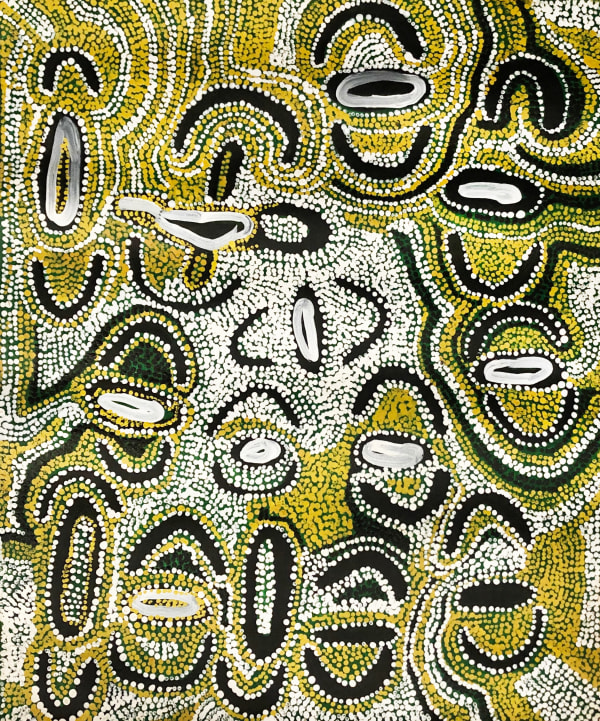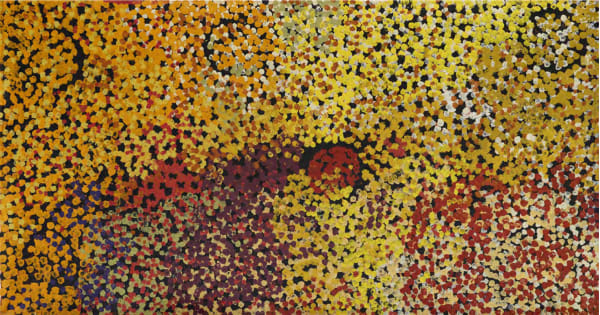Lorna Napurrula Fencer c. 1920-2006
Lorna Naparulla Fencer (c. 1920 - 2006) is acknowledged as one of the great innovators of the Warlpiri art movement. Born at Yartulu Yartulu, a Yam Dreaming site in the Tanami Desert, on the border of the Northern Territory and Western Australia, Lorna Napurrula Fencer was a respected Walpiri woman and senior custodian of her Country until her death.
In 1949 many Warlpiri people, including Lorna Napurrula Fencer, were forcibly moved from the Yuendumu community by the government. The artist and her family settled at Lajamanu, 250 miles north of their homeland, in the country of the Gurindji people. Here, Fencer managed to maintain and strengthen her cultural commitment through ceremonial activity and art, and asserted her position as a prominent elder figure in the community.
Lorna Napurrula Fencer began painting in acrylics on canvas in the 1980s. Prior to this, she had painted using natural pigments on traditional women’s coolamons and digging sticks. Throughout her prolific oeuvre, the Napurrula-Nakamarra creation stories from her brother’s custodial site at Yurmurrpa persists as a central motif. These ceremonial stories re-enact the journeys of the creation ancestors who dug out the first yarla (bush potato) from the earth around the underground water source at Yurmurrpa. Sacred stories about the caterpillar (luju), bush onion, yam, bush tomato and bush plum also recur as frequent motifs. Such crops also serve a practical agricultural function, providing abundant staple foodstuffs to the Walpiri people.
In her painted compositions, tangled forms and chains of vivid colour recall the twisted leaves and roots of the bush potato crop. Her scintillating surfaces vibrate with a sense of profound sacred knowledge.
Lorna Napurrula Fencer is represented in the Australian National Gallery and National Gallery of Victoria, in State Galleries and major private collections. In 2011 a major touring survey exhibition titled ‘Yulyurlu – Lorna Napurrula Fencer’ travelled around Australian institutional galleries.






